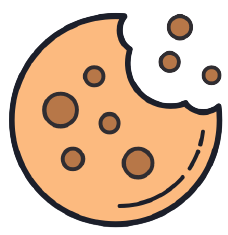From adult ORS to too much paracetamol,, cases of medicine mess-up in kids are growing. But following some basic guidelines can minimize dose errors.
A child suffering from acute gastroenteritis was prescribed an Oral Rehydration Solution (ORS) by a doctor. While the prescription detailed the child’s age, weight, diagnosis, and instructions on dissolving the sachet in 200 ml of water, the doctor inadvertently missed specifying a ‘pediatric’ ORS sachet. The pharmacist, unaware of this crucial detail, dispensed an adult ORS sachet, which is meant to be dissolved in one liter of water. Following the instructions on the prescription, the parents gave their child a highly concentrated dose of ORS. The child subsequently developed seizures and kidney failure and succumbed to these complications.
Such scary mess-ups are more common than you think. Though there is no Indian study on this. A US study published in the journal Clinical Pediatrics in 2023 found that every eight minutes, a child in the US gets a wrong dose of medicine at home.
WEIGHT DECIDES DOSE:
“For children’s medicines, all calculations are weight-based ones. Giving too much or too little medication can have some serious consequences. But there’s scant awareness about this.” Pediatric medication errors can occur at various stages — while prescribing, dispensing, and administering — he points out, adding, “There must be constant effort from healthcare providers, caregivers, and other stakeholders to ensure that such errors don’t happen.”
The Indian Pediatrics Association has been urging the govt to standardize dosages of common liquid medicines such as paracetamol, one of the most used drugs in children to avoid such confusions. There are different concentrations of liquid paracetamol (120mg/5ml, 125mg/5ml, and 250 mg/5ml) available. “It’s hard to believe paracetamol is harmful but nearly 85% of patients, aged from a few months to 17 years, admitted to our hospital with paracetamol poisoning had liver injury.”
In one instance. a nurse had mistakenly overdosed her three-year old with paracetamol. Her six-month old had been prescribed Crocin drops (100 mg per drop) for fever. A day later, when her three-year old fell ill, the doctor prescribed a teaspoon of Crocin syrup (120 mg). The three-year old was given a spoonful of the drops instead of the syrup, resulting in an overdose that required over two weeks of hospitalization. In March, the same drop-syrup confusion led to an eight-month old boy in Kerala needing critical care.
BE CANDID ABOUT MEDICATION:
Most medication errors in kids are preventable. And often it’s because the medicines are within the child’s reach. There have been several instances when toddlers drank up from syrup bottles because they were strawberry or cherry flavored. “Most parents tell kids that they are giving them sweet treats for fever while feeding the medicines. Though there are child protection locks on medicine bottles, we must admit kids ae smart and learn to open them.” “It’s more important to tell kids that they are being fed medicines and the reason for it. They must understand that medicines cannot be taken without their permission.”
Parents must spend time discussing the prescription with the doctor before they leave the consultation room. If they can’t, they must talk to the chemists at the drug store for clarity. “And for this it is always better to visit a shop physically instead of buying drugs online.”
Qualified chemists tell customers what medicines must be taken with water, what can be taken with milk or juice, and what must be taken before or after food. “It’s important to follow these instructions for drugs to work well. Most chemists, like family physicians, know the families. So, even if a customer is buying an over-the-counter product as simple as a sachet of fruit salt, which is high on sodium and not recommend for those with hypertension, they may ask them why?”
READ LABELS, FOLLOW INSTRUCTIONS:
Reading labels on the bottles is crucial. The National Health Mission specifically instructs healthcare workers to read the bottle label for paracetamol and refer to the dosage chart to ascertain the volume required per dose, according to the age and weight of the child.
The American Academy of Pediatrics had recommended that doctors educate parents on how to administer correct medicine dosages as well as store them safely. “Make medication regimes as simply as possible, Encourage the use of a standardized dosing tool with all liquid medications. Provide dose amount using milliliter units only, and avoid spoon-based or non-metric units.”
“Dehydration cases rise in summer, particularly among the elderly and children. We often see even hospital pharmacies offering customers tetra pack liquids that are not ORS.” Adding that the ready-to-drink versions may not provide adequate electrolyte replenishment, and may even worsen dehydration and diarrhea.
Preventing common medication errors in kids demands collective vigilance from healthcare providers, pharmacists as well as parents, with clear communication and safe home handling. “We need to increase awareness among all healthcare providers, common people, as well as policymakers.”
HOW TO MEASURE THE RIGHT DOSE:
- Know your units: Whether it’s ml (milliliters), cc (cubic centimeters), teaspoons, tablespoons, or ounces, always check before pouring.
- Avoid using a spoon: Use the measuring cap provided with the bottle to get the dose right. If it’s an odd dose such as 7 ml, it’s important to give exact measures and not do a round-off.”
- Watch out for decimals: If you give 5 ml when the prescribed dose is 5 ml, that’s ten times the dose. Doctors should write 0.5 ml to avoid confusion.
- Best to double check: If you’re confused, reconfirm with the doctor or chemist if you thought the dose was right or not. You can ask for a syringe and tell the chemist to mark the right dose on it. When in doubt, always ask again, and again.





